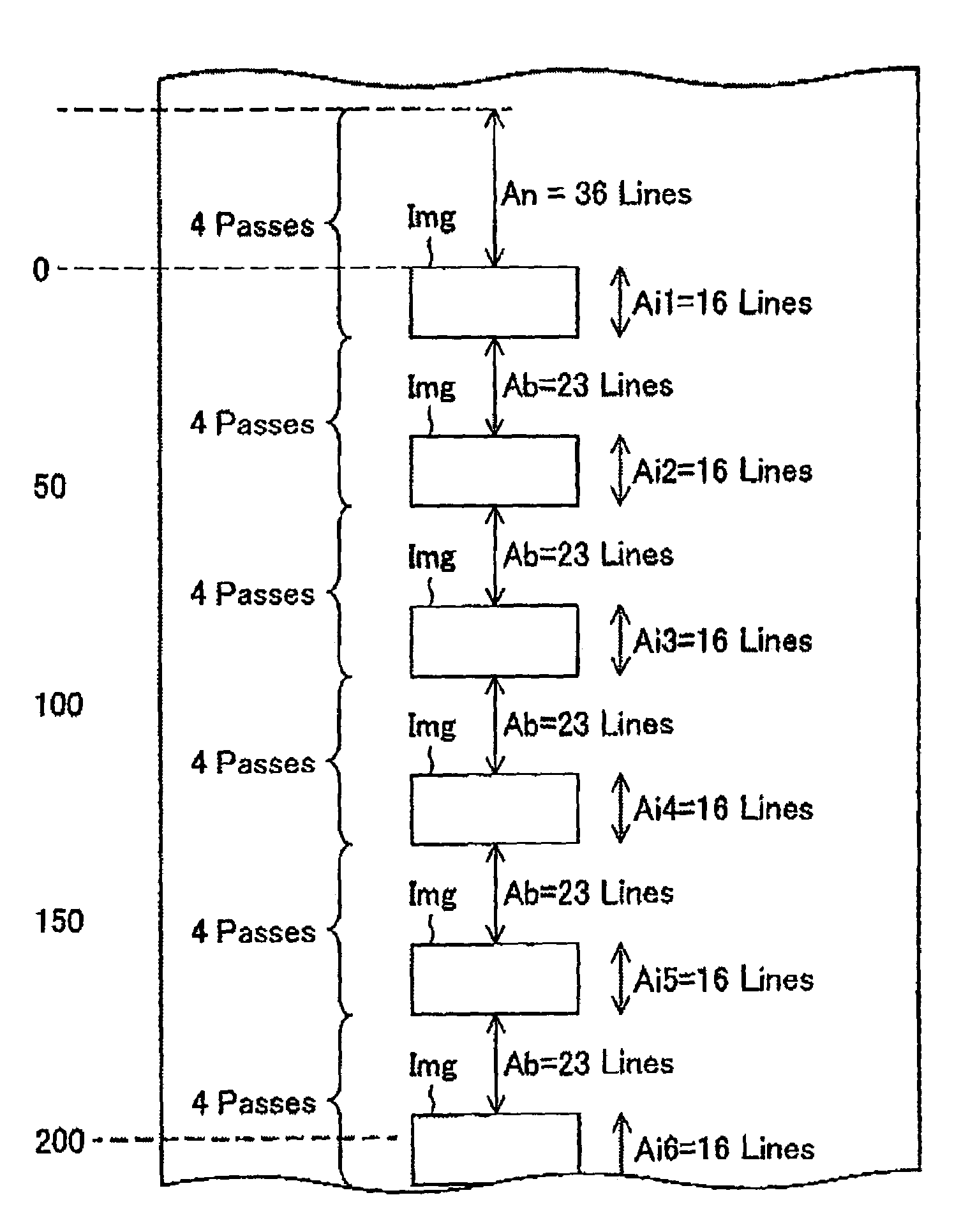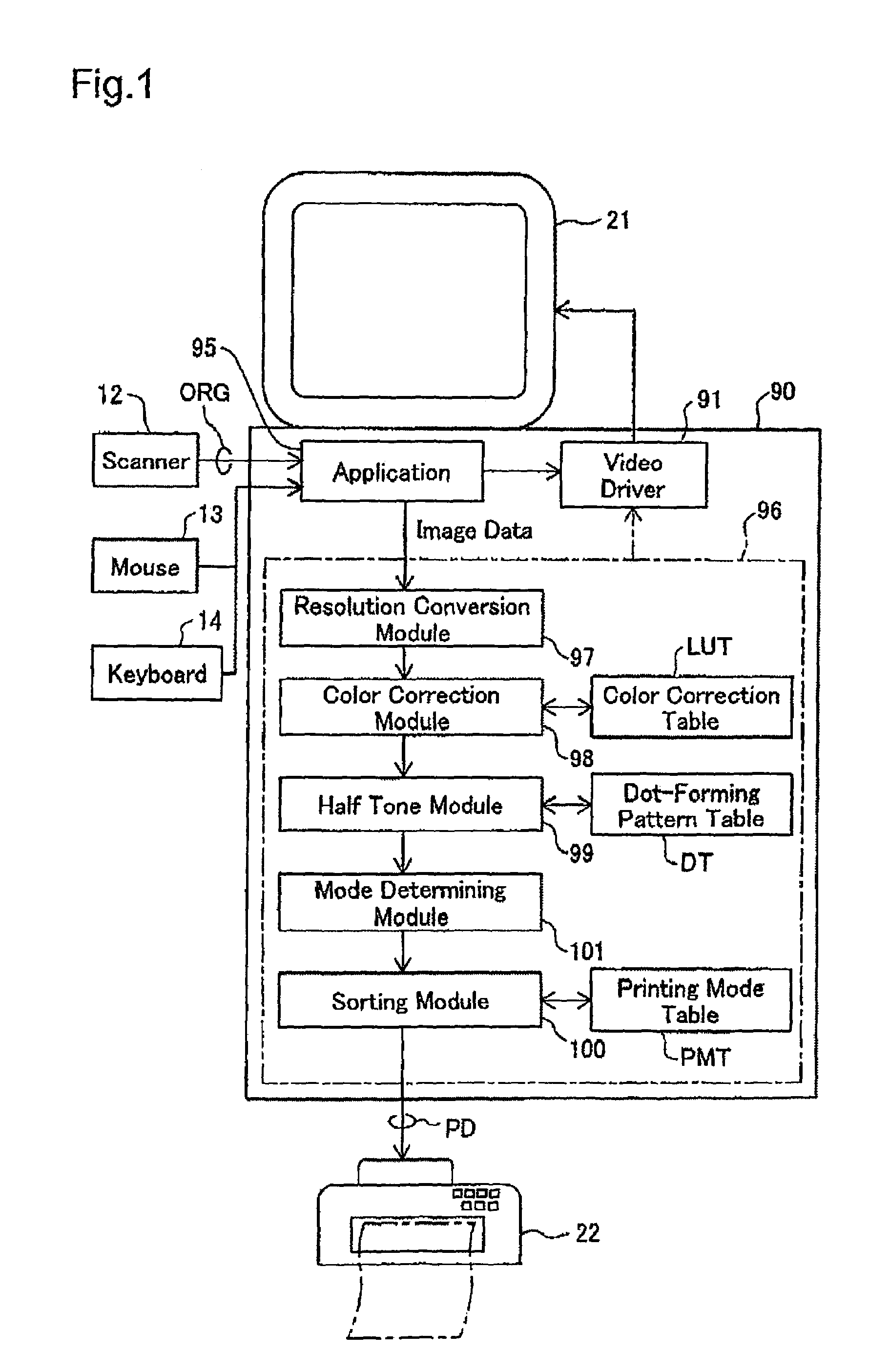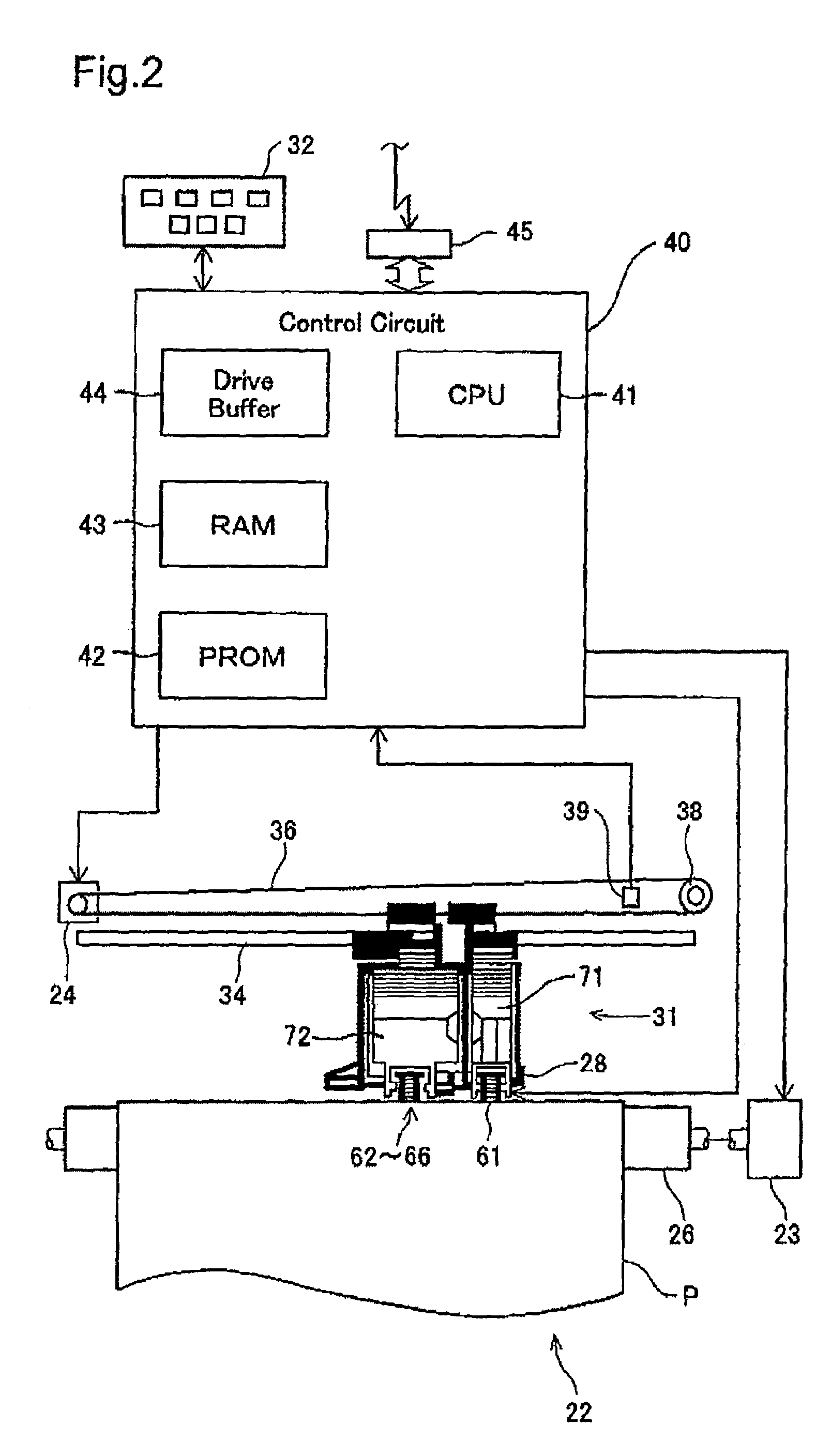Printing in different modes according to image size
a printing mode and image size technology, applied in the field of dots, can solve the problems of large waste of printing paper area, and achieve the effects of rapid printing, small average feed, and large average feed
- Summary
- Abstract
- Description
- Claims
- Application Information
AI Technical Summary
Benefits of technology
Problems solved by technology
Method used
Image
Examples
first example
A. FIRST EXAMPLE
A1. Device Structure
[0043]FIG. 1 is a block diagram of the structure of the software for a printing device according to an embodiment of the invention. This printing system is furnished with a computer 90 as a printer controller. The printer 22 and computer 90 can be referred to as the printing device in the broad sense. An application program 95 is run under the appropriate operating system of the computer 90. The operating system includes a video driver 91 and printer driver 96. Image data for transmission to the printer 22 is output from the application program 95 through these drivers. An application program 95 for retouching images reads the image from a scanner 12, and the image is displayed on a CRT 21 via the video driver 91 as the image is appropriately processed. The data from the scanner 12 is the original color image data ORG consisting of the three color components red (R), green (G), and blue (B), as read from the color original.
[0044]After the applicat...
second example
B. SECOND EXAMPLE
[0082]In the printing device of the second example, images can be printed in divided mode in addition to printing in high speed and paper conserving modes. High speed mode it the same as in the first example, but the number of nozzles used and the feed in paper conserving mode are different than in the first example. All other points are the same as the printing device in the first example.
[0083](1) Paper Conserving Mode: FIG. 13 illustrates how the main scan lines are printed by which nozzles in paper conserving mode. The symbols in the figure are the same as inFIG. 4, As is evident in FIG. 13, in paper conserving mode in the second example, three nozzles (nozzles #1 through #3) are used in printing for sub-scanning feed 3 dots at a time. In this type of printing, the printable area Ap is the area equal to 2 lines below nozzle #2 (of the printing nozzle row at the start of printing) and the area below. As a result, when images with a range of 16 lines in the sub-sc...
PUM
 Login to View More
Login to View More Abstract
Description
Claims
Application Information
 Login to View More
Login to View More - R&D
- Intellectual Property
- Life Sciences
- Materials
- Tech Scout
- Unparalleled Data Quality
- Higher Quality Content
- 60% Fewer Hallucinations
Browse by: Latest US Patents, China's latest patents, Technical Efficacy Thesaurus, Application Domain, Technology Topic, Popular Technical Reports.
© 2025 PatSnap. All rights reserved.Legal|Privacy policy|Modern Slavery Act Transparency Statement|Sitemap|About US| Contact US: help@patsnap.com



